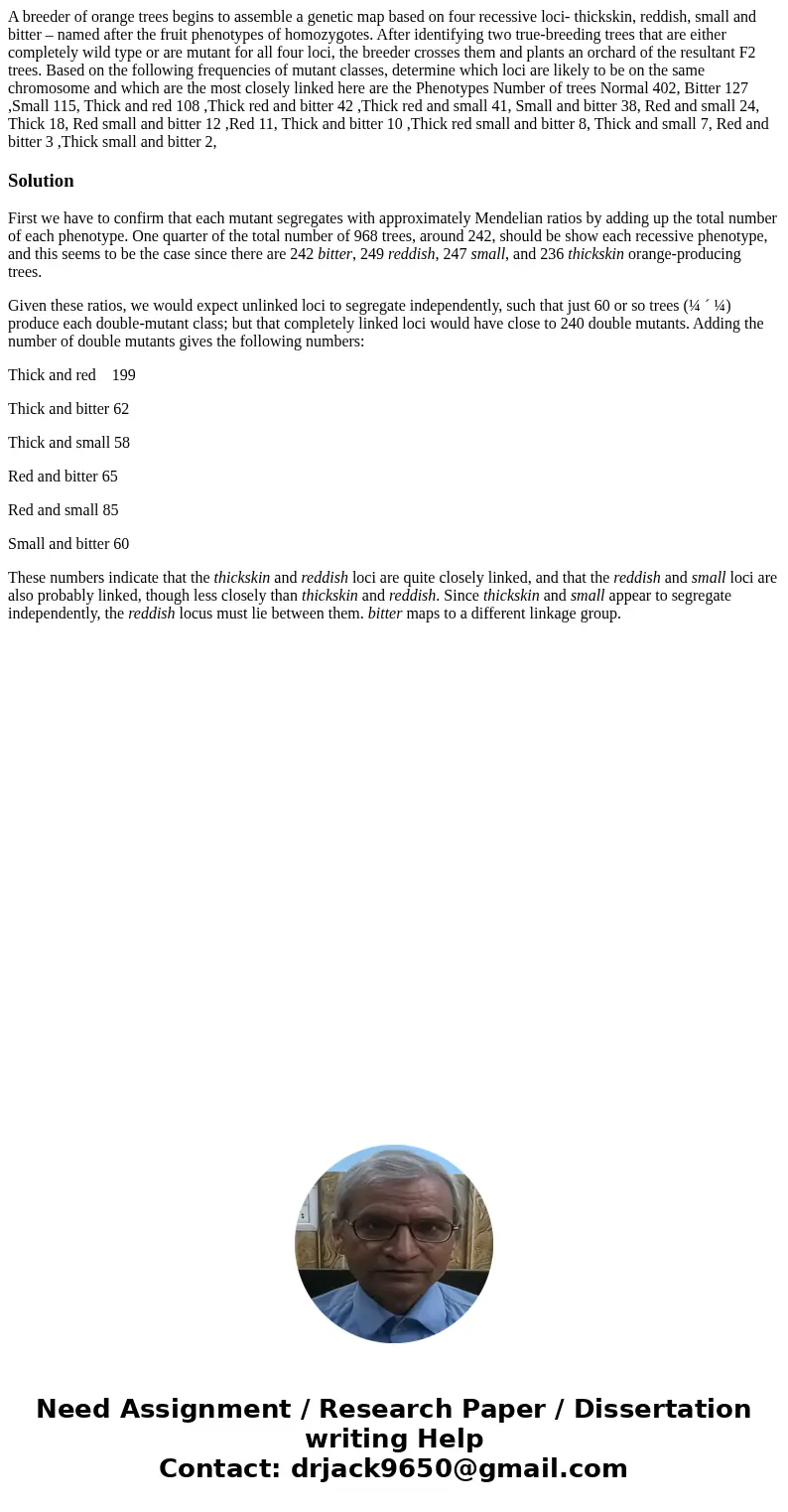A breeder of orange trees begins to assemble a genetic map b
A breeder of orange trees begins to assemble a genetic map based on four recessive loci- thickskin, reddish, small and bitter – named after the fruit phenotypes of homozygotes. After identifying two true-breeding trees that are either completely wild type or are mutant for all four loci, the breeder crosses them and plants an orchard of the resultant F2 trees. Based on the following frequencies of mutant classes, determine which loci are likely to be on the same chromosome and which are the most closely linked here are the Phenotypes Number of trees Normal 402, Bitter 127 ,Small 115, Thick and red 108 ,Thick red and bitter 42 ,Thick red and small 41, Small and bitter 38, Red and small 24, Thick 18, Red small and bitter 12 ,Red 11, Thick and bitter 10 ,Thick red small and bitter 8, Thick and small 7, Red and bitter 3 ,Thick small and bitter 2,
Solution
First we have to confirm that each mutant segregates with approximately Mendelian ratios by adding up the total number of each phenotype. One quarter of the total number of 968 trees, around 242, should be show each recessive phenotype, and this seems to be the case since there are 242 bitter, 249 reddish, 247 small, and 236 thickskin orange-producing trees.
Given these ratios, we would expect unlinked loci to segregate independently, such that just 60 or so trees (¼ ´ ¼) produce each double-mutant class; but that completely linked loci would have close to 240 double mutants. Adding the number of double mutants gives the following numbers:
Thick and red 199
Thick and bitter 62
Thick and small 58
Red and bitter 65
Red and small 85
Small and bitter 60
These numbers indicate that the thickskin and reddish loci are quite closely linked, and that the reddish and small loci are also probably linked, though less closely than thickskin and reddish. Since thickskin and small appear to segregate independently, the reddish locus must lie between them. bitter maps to a different linkage group.

 Homework Sourse
Homework Sourse